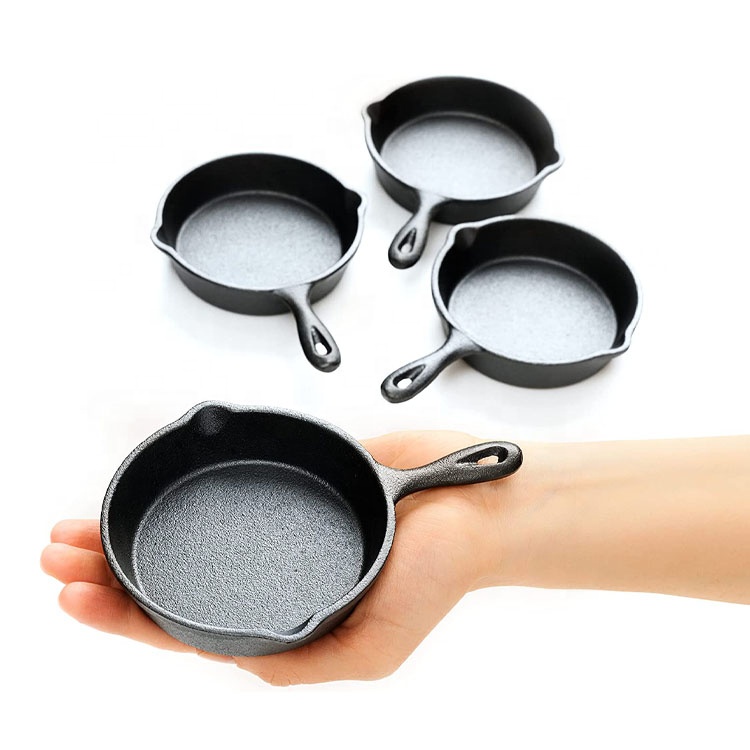
Versatile 26cm Cast Iron Skillet for Perfect Cooking Every Time
The Versatility and Charm of a 26cm Cast Iron Skillet
A 26cm cast iron skillet is more than just a cooking vessel; it is an embodiment of culinary tradition and innovation. Cast iron cookware has been utilized for centuries, and its popularity persists today due to its incredible versatility, durability, and ability to retain and evenly distribute heat. Whether you are a novice cook or a seasoned chef, a cast iron skillet can become one of the most invaluable tools in your kitchen.
The Timeless Nature of Cast Iron
Cast iron skillets have a rich history, dating back to ancient China, where they were first crafted for cooking on charcoal. Over the years, these cooking vessels evolved, making their way through various cultures and cuisines. The classic design of the cast iron skillet, characterized by its thick walls and heavy bottom, has stood the test of time, proving its effectiveness in various cooking methods including frying, baking, searing, and even roasting.
The 26cm size strikes an ideal balance; it is compact enough for single servings yet large enough to accommodate meals for small families or gatherings. This skillet can handle everything from breakfast eggs to a hearty skillet cornbread, making it a staple for any kitchen.
Exceptional Heat Retention and Distribution
One of the standout features of a cast iron skillet is its ability to retain heat. When properly preheated, a cast iron pan can maintain high temperatures, which is crucial for achieving that perfect sear on meats or crispy skin on roasted vegetables. Additionally, the even heat distribution ensures that food cooks uniformly, reducing the chances of hot spots that can lead to uneven cooking.
For instance, if you’re preparing a classic steak, the even heat allows you to achieve a beautiful crust on the outside while keeping the inside at your desired level of doneness. The skillet’s ability to go from stovetop to oven seamlessly also opens up a world of culinary possibilities, from baking frittatas to braising meats.
26cm cast iron skillet

The Health Benefits
In addition to its cooking prowess, using a cast iron skillet can also offer health benefits. Cooking with cast iron can increase the iron content in your food, which is particularly beneficial for individuals who may be iron deficient. Unlike non-stick pans that may release harmful chemicals at high temperatures, cast iron skillets can be used safely at high heat without the risk of toxic leaching.
Maintenance and Care
While cast iron skillets may seem a bit intimidating to maintain, they are, in fact, easy to care for with a little attention. The key is seasoning; this process involves applying a thin layer of oil to the pan and baking it to create a non-stick coating. Over time and with regular use, a cast iron skillet develops a natural non-stick surface that enhances its cooking performance. Proper cleaning after each use only requires hot water and a gentle scrub with a brush or sponge—avoid soap, which can strip away the seasoning.
The Aesthetic Appeal
Beyond functionality, a 26cm cast iron skillet also adds an old-world charm to any kitchen. Its rustic appearance complements modern and traditional cookware alike. Many chefs and home cooks proudly display their skillets, knowing that they are not just tools but heirloom items that can last a lifetime and often become family treasures.
Conclusion
In conclusion, a 26cm cast iron skillet is a remarkable addition to any kitchen. Its versatility, heat retention, health benefits, ease of maintenance, and aesthetic appeal make it a valuable asset for home cooks and professional chefs alike. Embracing this timeless piece of cookware not only enhances your culinary creations but also connects you to a rich history of cooking that spans generations. Whether you're frying, baking, or simmering, you'll find that the cast iron skillet truly excels in bringing out the best in your ingredients.
-
Season Cast Iron Perfectly with GPT-4 Turbo TipsNewsAug.01,2025
-
High Quality Cast Iron Cookware - Baixiang County Zhongda MachineryNewsAug.01,2025
-
Premium Cast Iron Pan: Durable & Perfect HeatNewsAug.01,2025
-
High Quality Kitchen Durable Black Round Cast Iron Cookware Pancake Crepe Pan-Baixiang County Zhongda Machinery Manufacturing Co., Ltd.NewsAug.01,2025
-
Cast Iron Cookware - Baixiang County Zhongda Machinery | Nonstick, Heat ResistanceNewsAug.01,2025
-
High Quality Kitchen Durable Black Round Cast Iron Cookware - Baixiang County Zhongda Machinery | Non-Stick, Heat Retention, DurableNewsJul.31,2025


